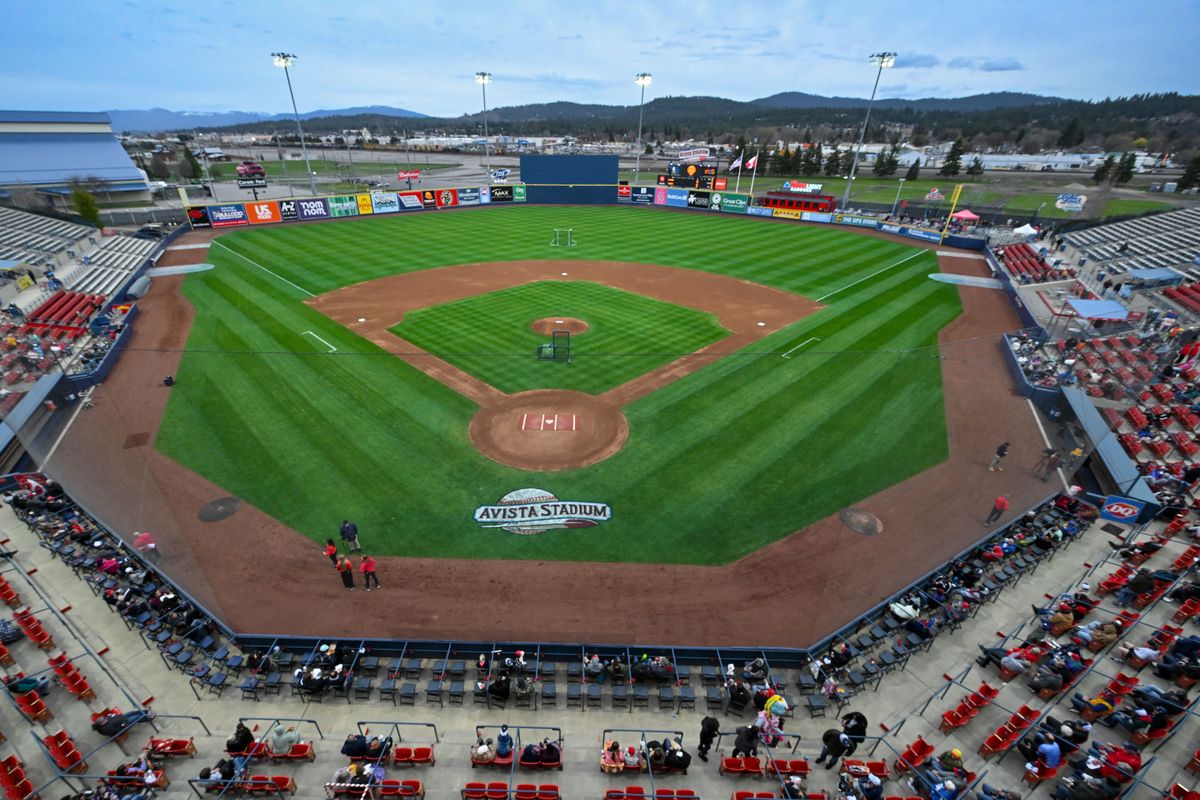Avista Stadium ‘changing fast’ with offseason upgrades, more on the way

Multimillion-dollar offseason renovations will give Avista Stadium a new look for players and fans when the Spokane Indians open their season Friday night.
Most of the renovations are part of a $16.5 million project to bring the 66-year-old stadium into compliance with Major League Baseball’s mandates by the start of next season, Indians President Chris Duff said.
“These improvements that we’re doing right now are going to provide a much more professional experience,” Duff said. “I think it just puts our community in a great spot, too. I mean, one of the goals of all of these projects were to make sure that we’re securing minor league baseball (in Spokane Valley) for future generations.”
Since the end of last season, construction crews remodeled and expanded the home and visiting clubhouses, including female dressing areas and indoor dining areas. Duff said players ate meals under a large tent the last couple of years.
Space is the biggest difference, Duff said, as crews added 1,500 square feet to the visiting clubhouse – now on the first-base side – and 3,500 square feet to the home clubhouse.
He said the Indians are returning 16 players from last season, and they’ve been impressed by the facilities upgrades.
“I think they’ve really been blown away by the changes,” Duff said.
Indians Senior Vice President Otto Klein wrote in an email the first stadium improvements have received “rave reviews from returning players.”
“This project signifies the team and County’s ongoing commitment to our fans and players, and we can’t wait to welcome the community back to the ballpark on Opening Night,” Klein wrote. “Let’s play ball!”
In other improvements, the stadium lights were upgraded to LED lights, which will flash and change colors at times for the fan experience, Duff said.
A grounds-crew building is under construction behind the center-field wall and is expected to be completed in early May. A large blue “batter’s eye,” or backdrop that helps a batter see the ball better, was also installed behind the center-field fence.
After completing the ground-crew building, crews will shift into constructing a new workout and batting cage facility, which would be completed in August or September.
A state-of-the-art digital videoboard will be mounted above the left-center field wall, but Duff said it might arrive too late in the season to be used this year.
Next offseason’s improvements include a complete reconstruction of the playing field, the addition of padded outfield walls, improved dugouts and the installation of protective netting between the field and stands.
All the MLB-mandated improvements must be completed by Opening Day next season, which Duff expects to happen.
He said the projects are on schedule and within budget .
“We’re excited to be able to say both those things,” Duff said.
Spokane Valley, Spokane County, the state of Washington, the Indians and other private sources are funding the $16.5 million renovations. About half of that money will have been spent after the building is completed. Lydig Construction is the general contractor.
“I think we went into the process very hopeful that we were going to find a way to work out a deal that worked for all parties that are involved,” Duff said.
“There was some doubt early on, for sure … We were able to get a city, a county and a state all working hand in hand pulling in the same direction to make sure that we were able to secure the funds needed to put the improvements into the facility.”
Major League Baseball took over operation of the minor leagues in 2020 and reduced the number of teams from 160 to 120. Duff said the vast majority of those 120 teams are undergoing some level of improvement to meet MLB’s standards to ensure player health and safety.
He said Avista Stadium required more upgrades than many other stadiums because of the facility’s age and the Indians’ shift in 2022 from short-season baseball to a long season that starts in April.
The transition from a lower level of baseball to a higher one meant more facility mandates, Duff said.
Several municipalities are knocking down their stadiums and building new ones, which can cost $80 million to $120 million.
Duff said he thinks the involved parties made a good financial decision by renovating instead of building anew.
“While we had a heavy lift, I think we made a really good decision and we’re able to secure a historic facility that we’ve had in the community since 1958,” he said.
Duff said the stadium is “changing fast,” and it’s only the beginning.
“What we’re seeing now is just kind of the beginning of what we’re going to see over the next 18 months, so it’s just an exciting time,” he said. “There’s a lot happening, and a lot happening quickly.
“What it does is secure the team for the long term.”